Cookery Feature - Wild & Free
Thanks to this year’s travel restrictions, 2020 will go down as the year of the great Irish staycation. And that’s proving to be a silver lining of this challenging time as - just as we did in the recession, when foreign holidays were put on hold for different reasons - many of us have found ourselves exploring some of the quieter areas of Ireland, spending more time close to nature and enjoying the opportunity to forage for the plentiful free food that is to be found everywhere at this time of year. Interest in foraging has been growing dramatically recently and, for a lot of city people, having the opportunity to get stuck into it this summer will have triggered a lifelong enthusiasm.
Free food in the wild is not restricted to summer holidays, but there is something special about that ‘what shall we do today’ feeling and - whether it’s the mackerel caught from a pier on a sunny day, seaweeds cut carefully from the rocks, sea vegetables foraged along the shoreline, or berries and fungi found on moors and woodland - nothing tastes better.
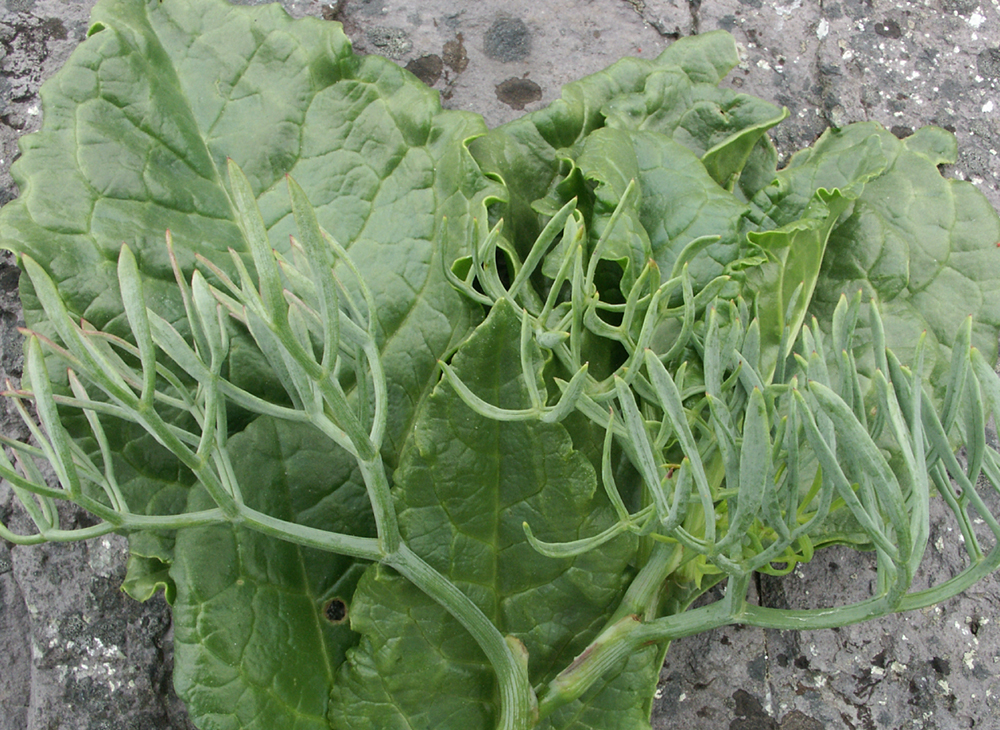 Shoreline vegetables grow anywhere they can get a hold in salty areas - would fit in anywhere in this Intro section between the sea and the land proper. Two of the most popular for culinary purposes are Sea Spinach – also known as Sea Beet – which has along season and is easily identifiable because it has shiny green leaves with fleshy stems and looks quite similar to garden spinach, and the delicate Samphire, a plant with finely branched tubular stems.
Shoreline vegetables grow anywhere they can get a hold in salty areas - would fit in anywhere in this Intro section between the sea and the land proper. Two of the most popular for culinary purposes are Sea Spinach – also known as Sea Beet – which has along season and is easily identifiable because it has shiny green leaves with fleshy stems and looks quite similar to garden spinach, and the delicate Samphire, a plant with finely branched tubular stems.
When foraging for sea spinach, choose tender young leaves, trim and wash well then use them whole ,or with the chard-like stems removed. Their salty tang and robust texture makes them a good accompaniment to bland, soft foods, such as eggs, and they can be cooked or used fresh in salads when very young and tender.
Samphire is at its best in July and August and pairs well with seafood so it’s often available in fish shops in season. It’s a bit like miniature asparagus and very quick and easy to prepare, to use as a side dish on its own or to mix through new potatoes - just select tender sprigs, wash well and steam for 3-5 minutes, then drain and toss in butter. Traditionally it is also pickled and marries well with cheeses.
RECIPES TO TRY:
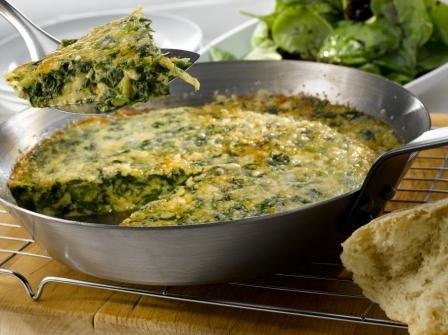 Green Frittata With Sea Spinach Salad
Green Frittata With Sea Spinach Salad
A quick and easy holiday meal that could be made with cultivated spinach or sea spinach, as available, or a mixture. The flavour and texture of sea spinach is more robust than the usual kind, so taste it raw to familiarise yourself with the taste and experiment with a single serving or try using less and mix it off with more familiar vegetables – or use it only in the frittata, or in the salad rather than both. Wash sea spinach leaves carefully, and trim before use. Season with pepper but don’t add salt, as the sea spinach is naturally salty.
Serves 4
2 tablespoons olive oil
1 bunch of scallions, chopped
Approx 400g baby sea spinach leaves or cultivated spinach leaves, well washed and drained
6 eggs
Good handful of grated hard cheese (mature flavour)
Knob of butter
Freshly ground black pepper to season
2 to 3 teaspoons balsamic vinegar
Pre-heat the grill.
Heat a tablespoon of the oil in a large non -stick pan, add the scallions and a third of the spinach.
Stir-fry for 2-3 minutes until the vegetables soften.
Tip into a colander and press down to squeeze out the excess moisture.
Beat the eggs and cheese and then add in the spinach mixture and stir well.
Reheat the pan, adding the knob of butter; pour in the egg mixture and cook, stirring gently, until well set on the base.
Finish cooking under the grill.
Slide onto a large plate for serving or cut into wedges and serve from the pan.
For the salad: Mix the remaining spinach with the olive oil and balsamic vinegar, season lightly and serve with the frittata and some crusty bread.
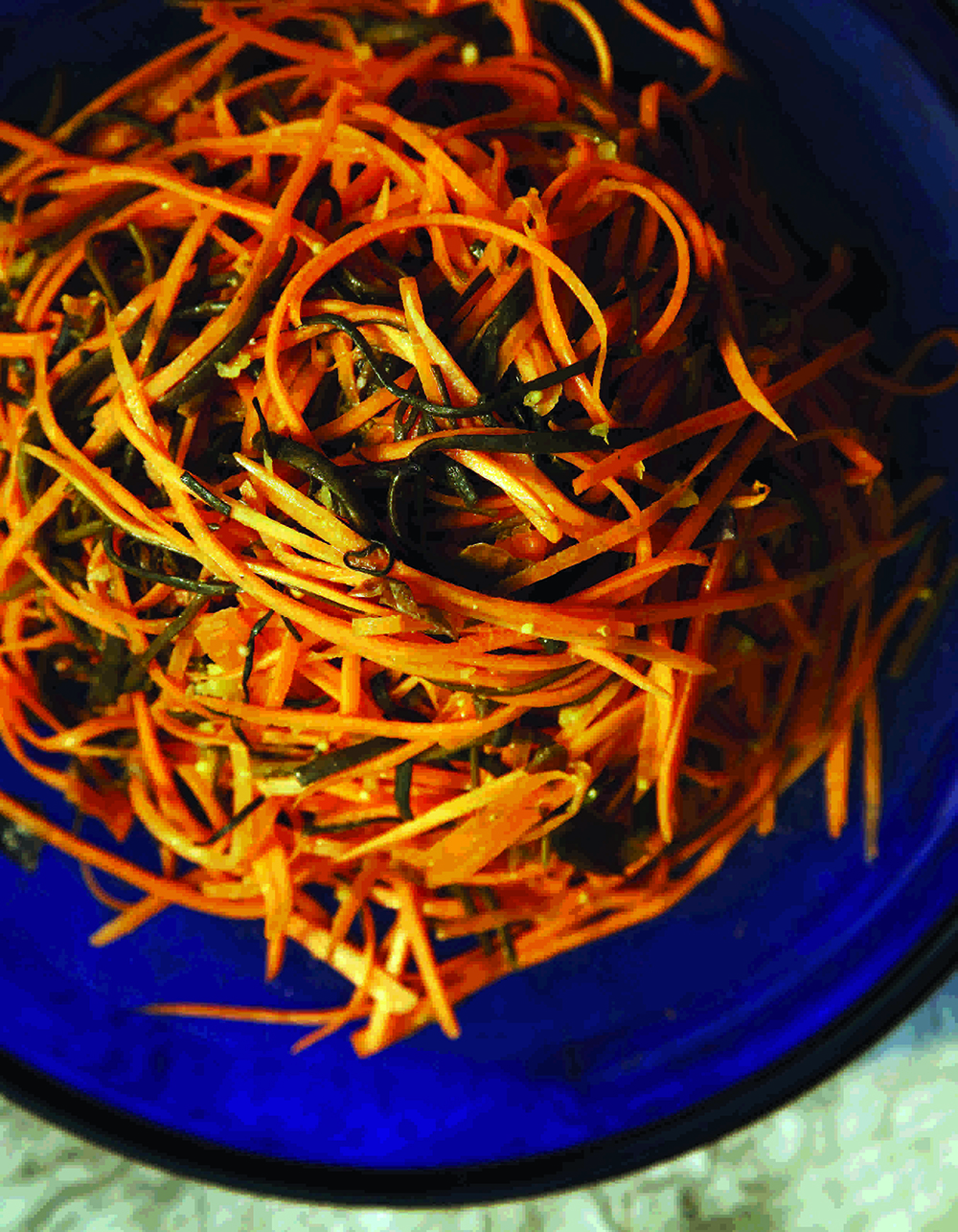 Carrot and Sea Spaghetti Salad
Carrot and Sea Spaghetti Salad
Sligo GP, Prannie Rhatigan’s Irish Seaweed Kitchen is the go-to guide to harvesting, preparing and cooking Irish seaweeds, which she describes as “... a living treasure by the shore, more valuable by far than any golden coins that may lie buried beside it in the sand.” In this recipe, willowy sea spaghetti and delicate carrot strips combine with a sweet garlicky dressing to create a colourful, easy to prepare salad that Prannie makes regularly for demonstrations and it never fails to delight even first time seaweed tasters. And sea spaghetti is very easy to recognise - the name says it all!
Serves 4-6
15g (½oz) dried sea spaghetti, or a handful of fresh sea spaghetti
2 tablespoons lemon juice
1 tablespoon wine vinegar
4-5 carrots, washed well, not peeled, and sliced into long, fine lengths with a potato peeler
Dressing:
3 tablespoons good quality olive oil
1½ tablespoons lemon juice
1 teaspoon coarse whole grain mustard and honey
1 tablespoon mixed seaweed
2 cloves garlic, crushed
A pinch of cayenne pepper
A pinch of grey sea salt
To prepare the sea spaghetti: Rinse dried sea spaghetti and soak in warm water for 1 hour or briefly steam until al dente. If using fresh sea spaghetti, rinse well and steam for 10 minutes until al dente. Rinse the seaweed again and then marinate in the lemon juice and wine vinegar for a few hours or overnight. Some strands can be left full length to decorate – chop the remainder into 2.5-5cm (1-2 inch) pieces.
To prepare the salad: Combine the dressing ingredients in a small jug or bowl. Pour the dressing over the carrots and sea spaghetti and allow to marinate for at least an hour.
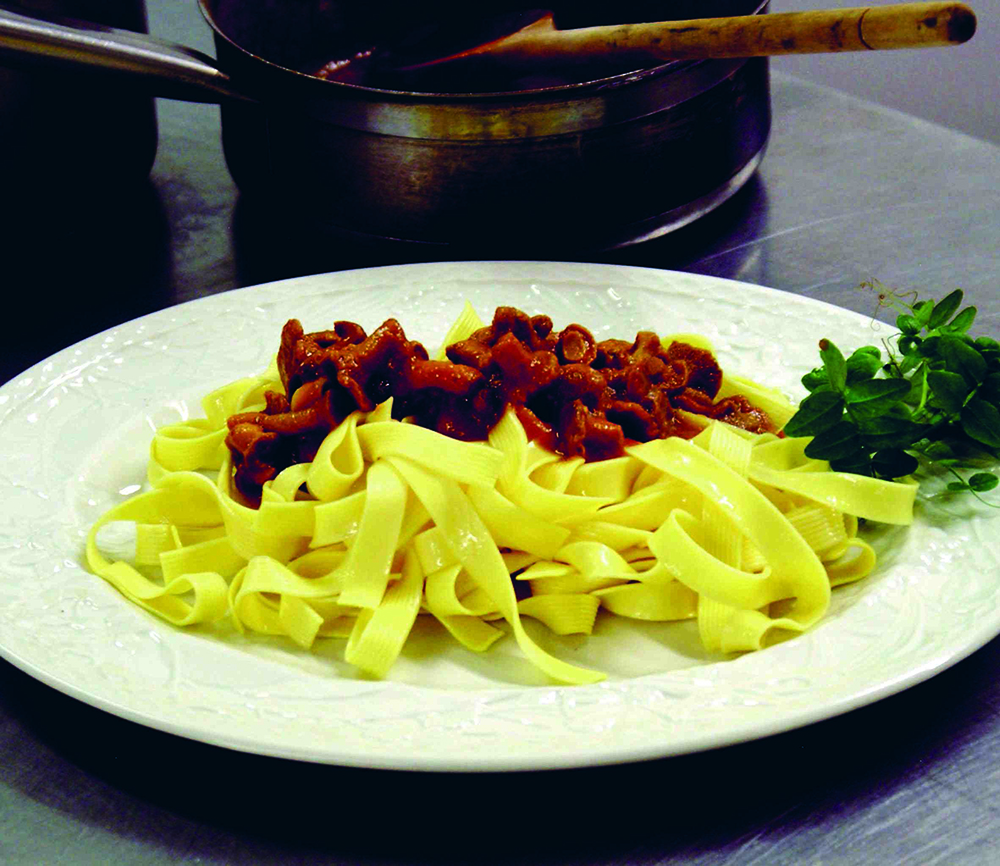 Wild Chanterelle Goulash
Wild Chanterelle Goulash
One of the most highly prized wild fungi, bright yellow chanterelles are in season from July to November and they’re easily spotted in clusters in woodland, notably in forests with birch, beech and mossy coniferous areas. They’re especially good in potato, egg and bacon dishes, and they keep for couple of days in the fridge or can be dried, or preserved in oil. This recipe is from The Strawberry Tree Restaurant at BrookLodge, which specialises in organic and wild foods and features in the very useful book “Wild Food, Nature’s Harvest: How to Gather, Cook & Preserve” by Evan Doyle, of BrookLodge, and the late food writer, Biddy White Lennon. They recommend using wild or organic ingredients wherever possible.
1kg wild chanterelles
2 onions, finely diced
2 red peppers, diced
100g streaky bacon or pancetta, diced
1 garlic clove, finely chopped
2 tbsp tomato purée
1 rounded tbsp sweet paprika powder
300ml vegetable or chicken stock
A splash of white wine vinegar
50ml organic cream
½ bunch parsley, chopped
Crème fraiche
Sea salt and black pepper
Organic rapeseed oil for frying
Brush the chanterelles or wash very quickly under running water and pat dry. Heat some oil in a pan and fry the mushrooms quickly, turn into a sieve set over a bowl and save the poured-off liquid.
Fry the diced onions over medium heat until golden, add the peppers, garlic and bacon and fry for another 5 minutes. Reduce the heat, put the tomato purée in and stir well, avoid burning the purée. Add the paprika powder and then deglaze it with the vinegar.
Pour the stock and the saved liquid from frying the chanterelles and cook it gently for 15−20 minutes. Add the cream, season with salt and pepper and blitz in a processor.
Strain through a sieve into a pot. Put the chanterelles back in the sauce and cook for a few more minutes.
To finish, fold in the chopped parsley and season to taste. Garnish with, or fold in, a dollop of crème fraiche
Serve as its original decreed, with bread dumplings, or maybe with pasta or rice instead. Makes a perfect flavourful supper with friends or even a TV snack - just spoon over a slice of fresh grilled bread, and enjoy.
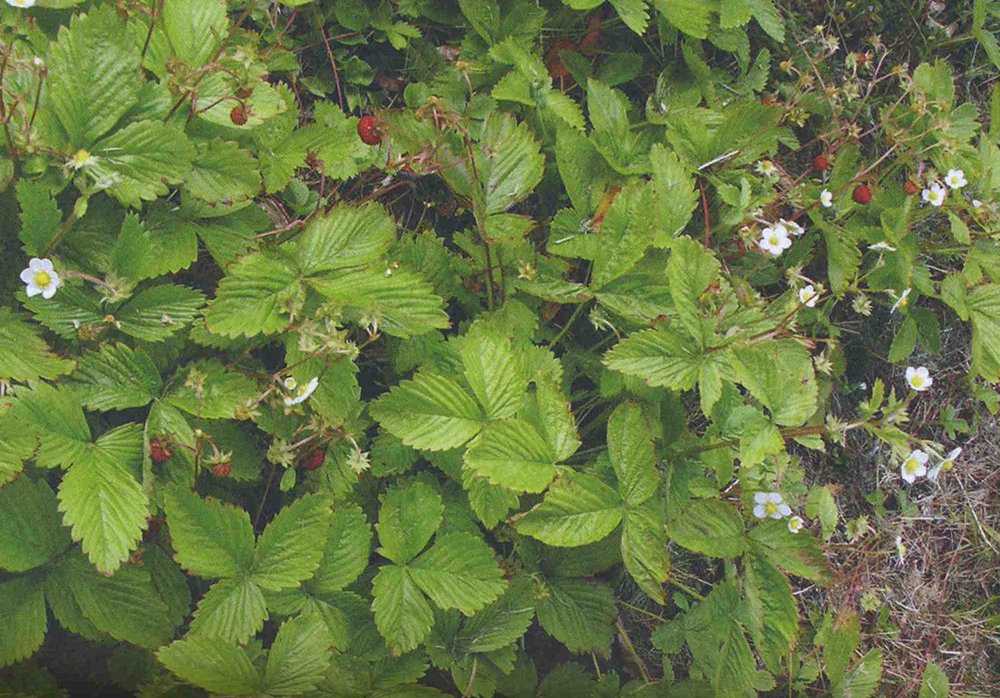 Wild Strawberry, Bilberry, Blackberry & Rose Water Jelly
Wild Strawberry, Bilberry, Blackberry & Rose Water Jelly
The small, but sweet and intensely aromatically flavoured, fruits of Fragaria Vssca, the wild woodland strawberry or fraises des bois are produced generously over a long season, from June to late September. They may well pop up in your garden, where they will settle and reproduce in the same way as cultivated strawberries, by runners thrown out in late season, which root where they land on soil. ‘Wild’, or Alpine, strawberries are also bred for cultivation have slightly larger fruits and similar, although less intense flavour. Bilberries (‘fraughan’, the smaller wild cousin of the blueberry) are in season now and there for the picking if the birds have missed a few - and the blackberries won’t be far behind. This recipe is also from ‘Wild Food’ where Evan and Biddy describe it as “an adult jelly of summer fruits that will transport you back! … We feel that the rose water adds to the deep perfume taste of this fabulous fruit, the wild strawberry.”
1 handful wild strawberries
2 handfuls wild bilberries
2 handfuls wild blackberries
750ml water
400g sugar
½ vanilla pod
5 leaves of gelatine
4–5 drops of rose water
250ml sparkling white wine
Place the water and sugar into a saucepan with the half vanilla pod, split. Bring slowly to boil to dissolve the sugar. Soak the gelatine leaves in a bowl of cold of water. Add gelatine into hot liquid and stir until you are sure the gelatine is fully dissolved through the liquid. Whisk the rose water drops into the liquid and add the white wine.
Use a large mould, just as your grandmother did, for placing in the centre of the table. Or, use individual dariole moulds or coffee cups or whatever shape you like. Place a layer of the wild strawberries in the bottom of mould and just cover with the jelly liquid. Allow this layer to set in fridge. Keep the remainder of the liquid jelly warm. When set, add another layer of berries, this time using all three types of berries (wild strawberries, wild bilberries and wild blackberries). Repeat layering process until the mould is full.
Allow to set in the fridge. To turn out, dip the jelly mould into hot water for a few seconds and turn out onto serving dish.





There are currently no comments
Leave a comment
Not a member? Register for your free membership now!
Or leave a comment by logging in with: